I'd like to create a sankey-like plot that I can create in ggplot2 where there are curved lines between my start and end locations. Currently, I have data that looks like this:
df <- data.frame(Line = rep(letters[1:4], 2),
Location = rep(c("Start", "End"), each=4),
X = rep(c(1, 10), each = 4),
Y = c(c(1,3, 5, 15), c(9,12, 14, 6)),
stringsAsFactors = F)
ex:
Line Location X Y
1 a Start 1 1
2 a End 10 9
and creates a plot that looks something like this:
library(ggplot2)
ggplot(df) +
geom_path(aes(x= X, y= Y, group = Line))
I would like to see the data come out like this:
This is another option for setting up the data:
df2 <- data.frame(Line = letters[1:4],
Start.X= rep(1, 4),
Start.Y = c(1,3,5,15),
End.X = rep(10, 4),
End.Y = c(9,12,14,6))
ex:
Line Start.X Start.Y End.X End.Y
1 a 1 1 10 9
I can find examples of how to add a curve to the graphics of base R but these examples don't demonstrate how to get a data frame of the points in between in order to draw that curve. I would prefer to use dplyr for data manipulation. I imagine this will require a for-loop to build a table of the interpolated points.
These examples are similar but do not produce an s-shaped curve:
Plotting lines on map - gcIntermediate
http://flowingdata.com/2011/05/11/how-to-map-connections-with-great-circles/
Thank you in advance!


